Stargazing is a magical experience that allows us to connect with the universe. The U.S. is home to some of the best places for observing the night sky in all its glory. From remote national parks to high-altitude peaks, there are countless spots where the stars shine brightest. Here are 20 of the best stargazing locations across the country.
Mauna Kea, Hawaii
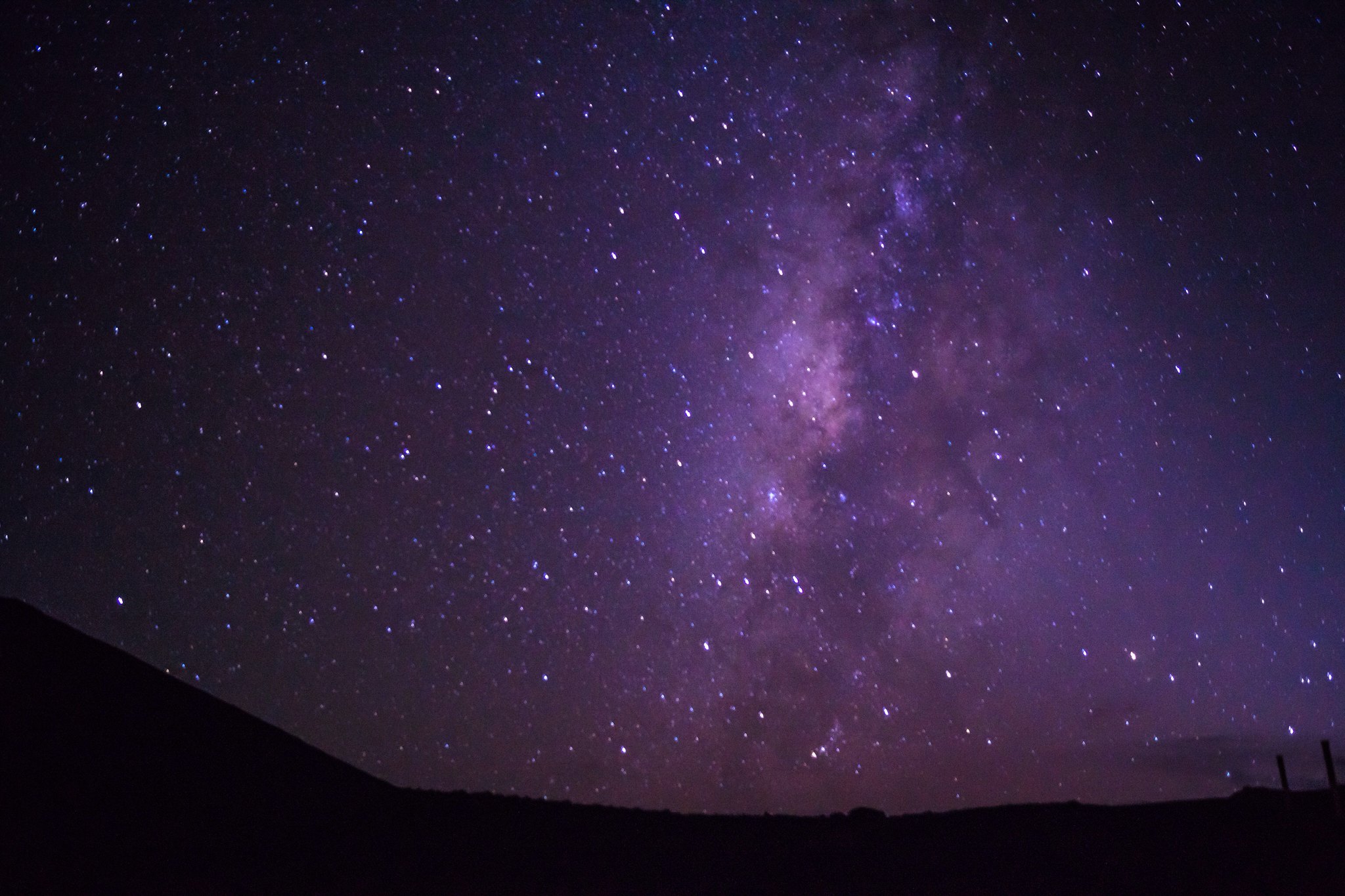
Mauna Kea’s summit offers unparalleled stargazing opportunities due to its high altitude, dry environment, and minimal light pollution. The observatories here are some of the best in the world, attracting both astronomers and tourists alike. Although it’s a popular spot, the vastness of the area ensures a peaceful stargazing experience. The clear, dark skies allow for breathtaking views of celestial wonders year-round.
Cherry Springs State Park, Pennsylvania
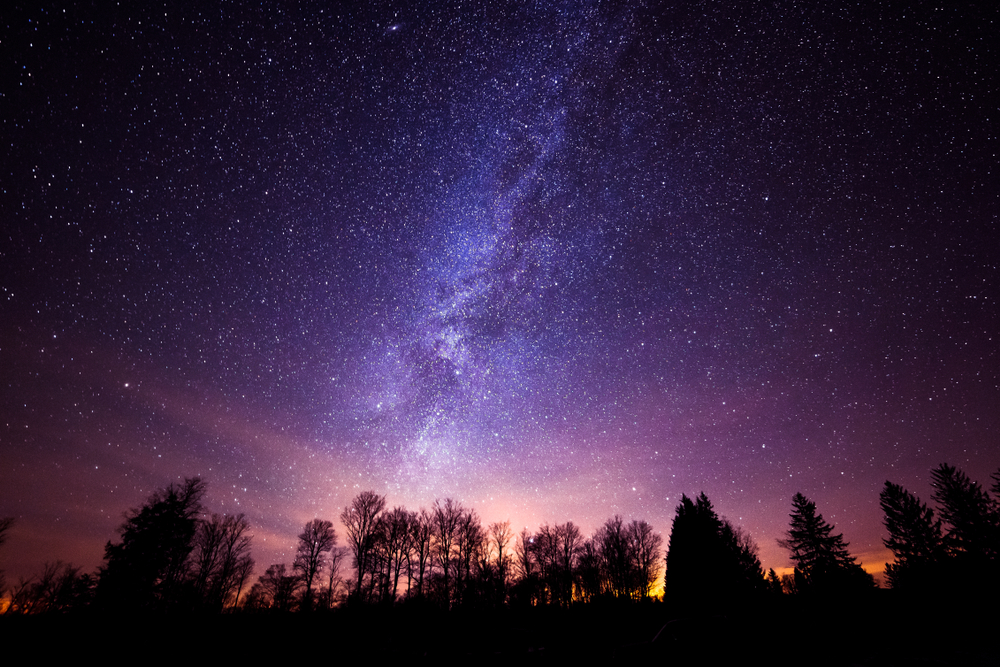
Cherry Springs State Park is renowned for its exceptionally dark skies, making it a prime location for stargazing. The park offers astronomy programs and has a dedicated observation field for stargazers. It’s a favorite among astronomy enthusiasts, but there’s ample space to find a quiet spot. The absence of urban light ensures clear views of the Milky Way and numerous constellations.
Big Bend National Park, Texas
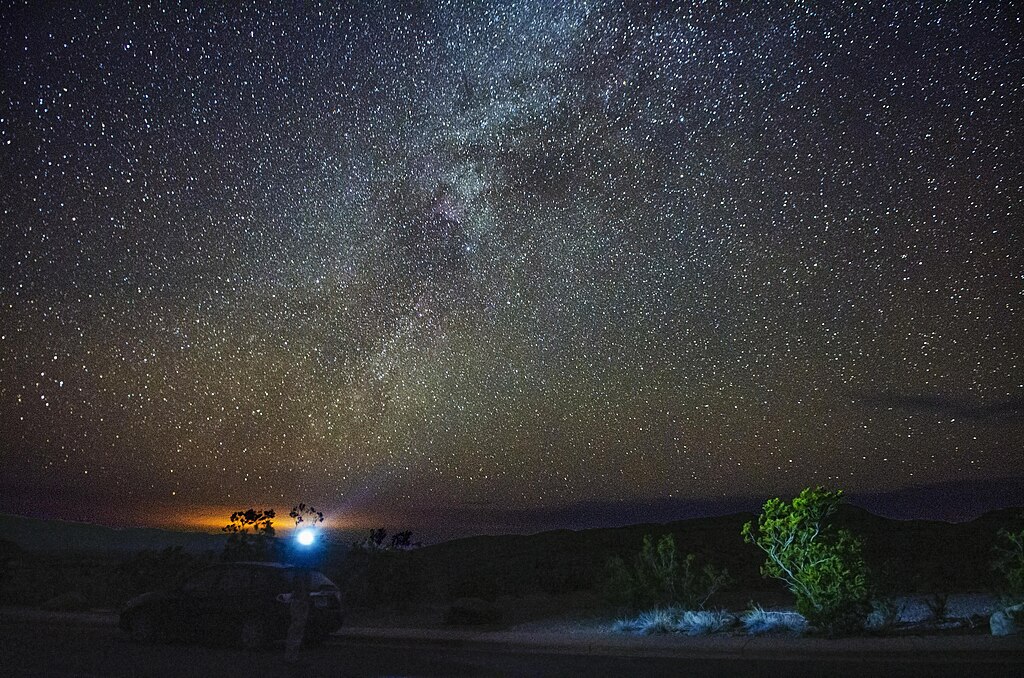
Big Bend National Park is one of the most remote and least light-polluted national parks in the contiguous United States. Its vast, open landscapes and clear, dry air create ideal conditions for stargazing. While it’s a popular destination for nature lovers, the park’s size allows for solitude and uninterrupted night sky viewing. The park often hosts stargazing parties and astronomy events.
Great Basin National Park, Nevada
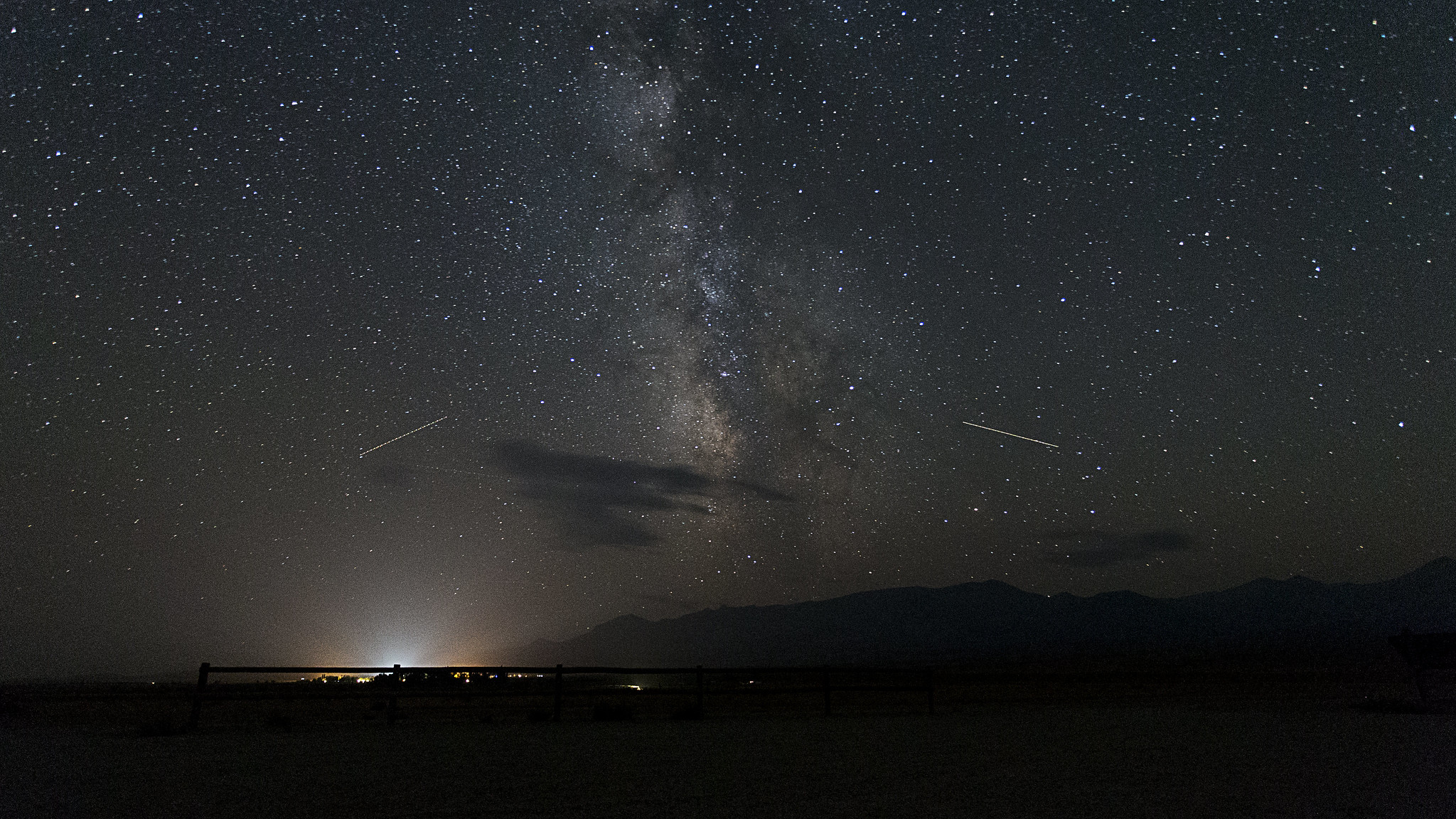
Great Basin National Park offers some of the darkest skies in the country, perfect for observing stars, planets, and meteor showers. The park’s high elevation and clear air contribute to its stellar stargazing conditions. It’s a relatively quiet spot, attracting dedicated stargazers and nature enthusiasts. Ranger-led astronomy programs enhance the experience, providing educational insights.
Bryce Canyon National Park, Utah
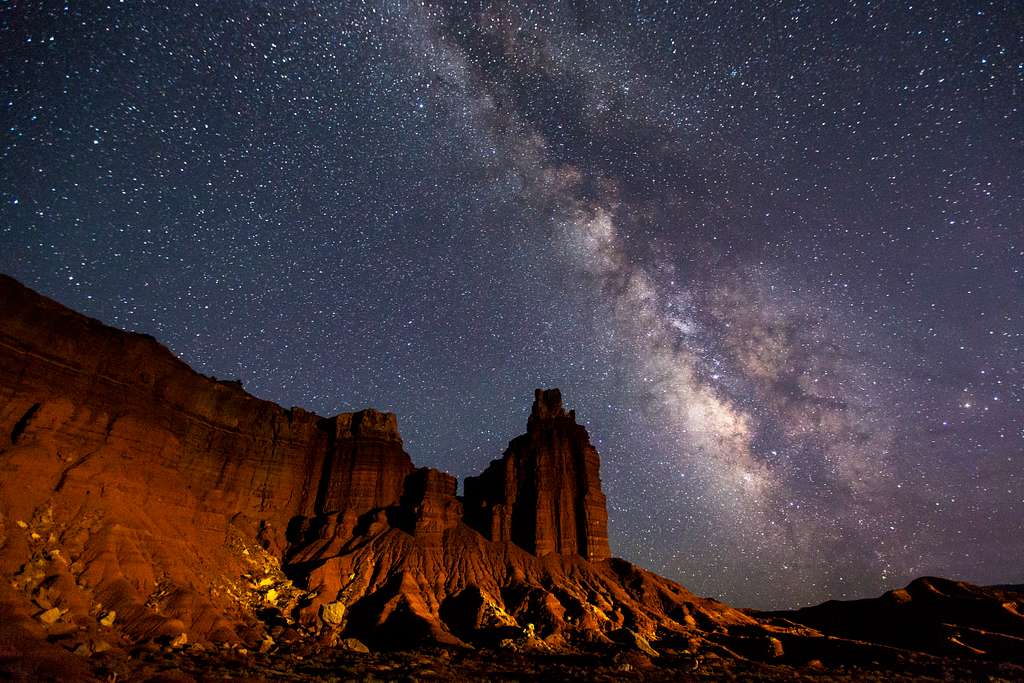
Bryce Canyon National Park is famous for its unique rock formations and incredibly dark skies. The high elevation and dry climate contribute to its excellent stargazing conditions. The park attracts many visitors, but designated stargazing areas help maintain a serene atmosphere. Astronomy festivals and ranger-led programs make stargazing here a memorable experience.
Joshua Tree National Park, California

Joshua Tree National Park is known for its stunning desert landscapes and crystal-clear night skies. The park’s remote location and low light pollution make it a haven for stargazers. While it can get busy, especially during peak seasons, the vastness of the park allows for peaceful stargazing spots. The park hosts night sky programs and events, adding to the experience.
Death Valley National Park, California/Nevada
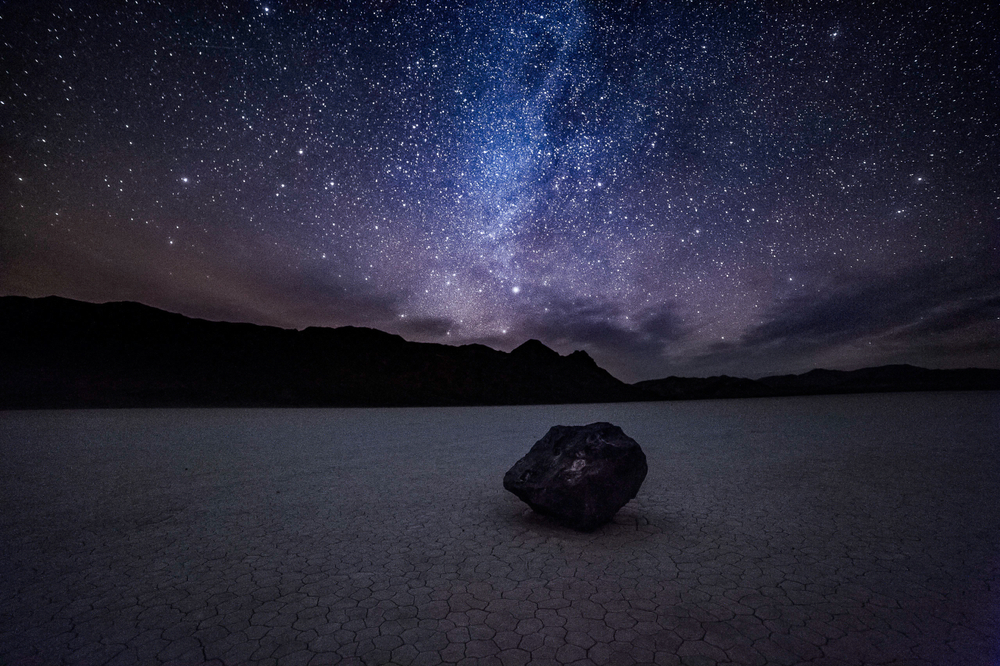
Death Valley National Park boasts some of the darkest skies in the U.S., ideal for stargazing and astrophotography. The park’s remote location and low humidity create perfect conditions for observing stars and galaxies. It’s a popular destination, but the expansive desert ensures plenty of quiet, secluded spots. Regularly scheduled stargazing events enhance the visitor experience.
Glacier National Park, Montana
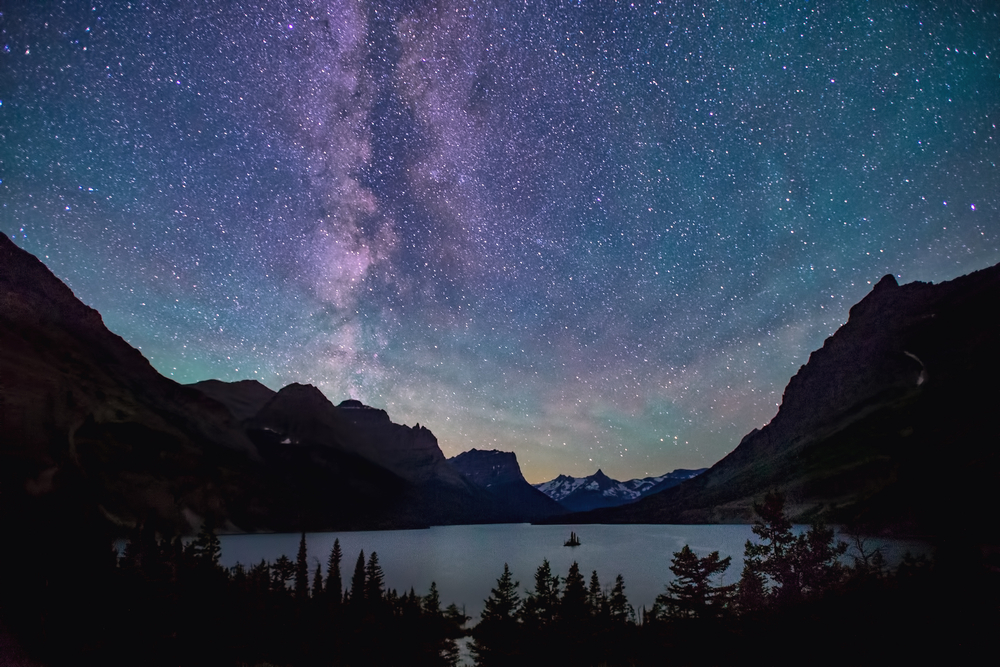
Glacier National Park offers pristine night skies thanks to its remote location and minimal light pollution. The park’s high elevation and clear air provide excellent conditions for stargazing. Although it’s a well-visited park, there are many isolated areas for peaceful stargazing. Ranger-led night sky programs offer educational and immersive experiences.
Rocky Mountain National Park, Colorado
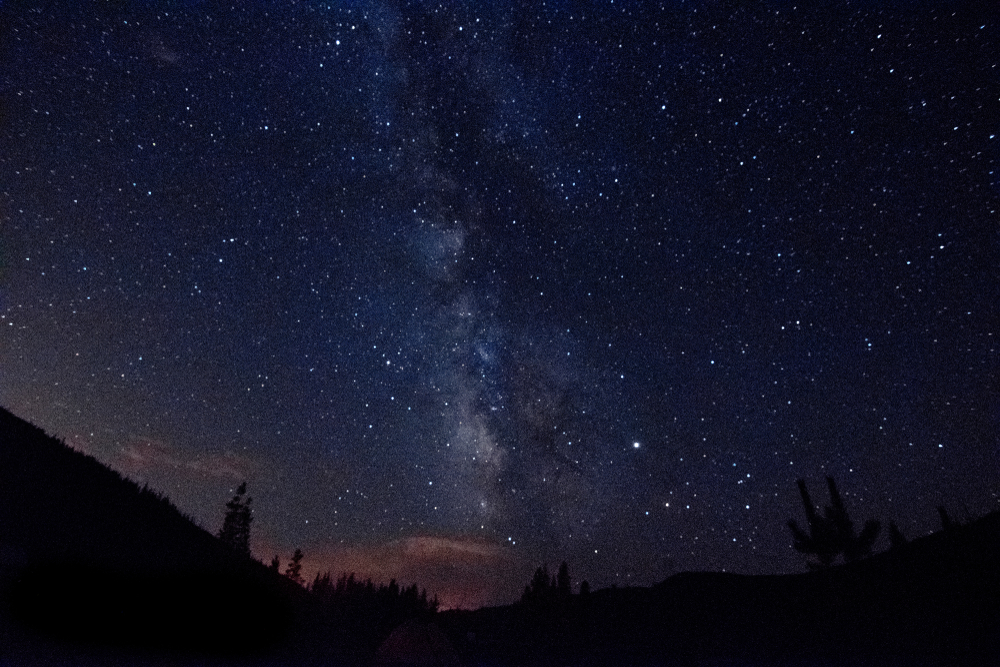
Rocky Mountain National Park features high-altitude stargazing with some of the darkest skies in Colorado. The park’s vast, open spaces and low light pollution make it a prime location for observing the night sky. It’s a popular park, but finding a quiet stargazing spot is easy due to its size. The park offers astronomy programs and events to enhance the experience.
Crater Lake National Park, Oregon
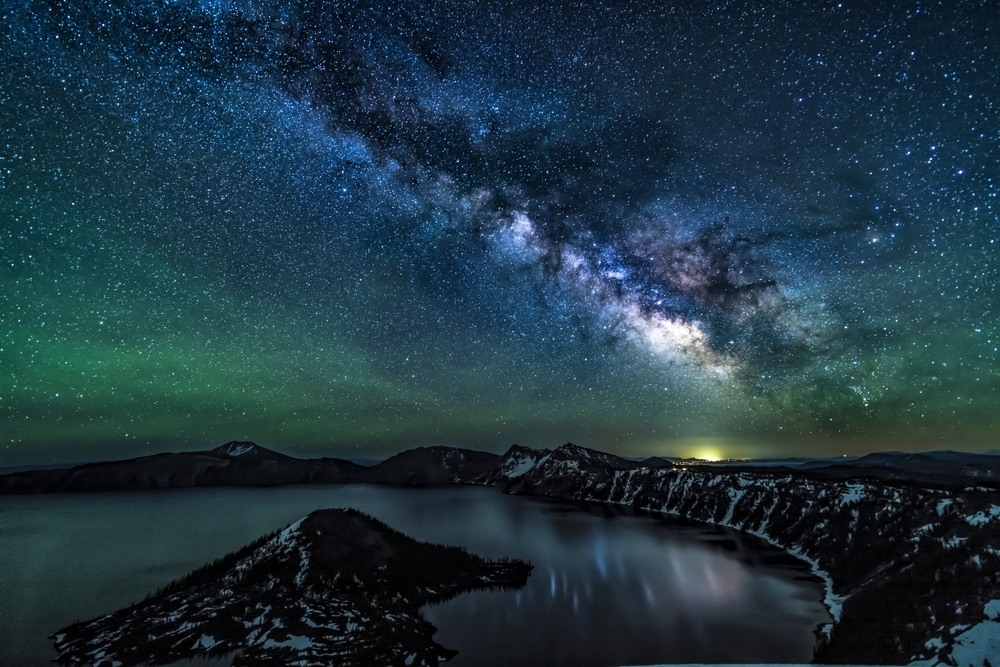
Crater Lake National Park is known for its stunningly dark skies, perfect for stargazing and astrophotography. The park’s high elevation and remote location contribute to its excellent stargazing conditions. While it attracts many visitors, the park’s vastness ensures plenty of quiet spots for stargazing. Night sky events and programs are frequently held, providing educational insights.
Yellowstone National Park, Wyoming/Montana/Idaho
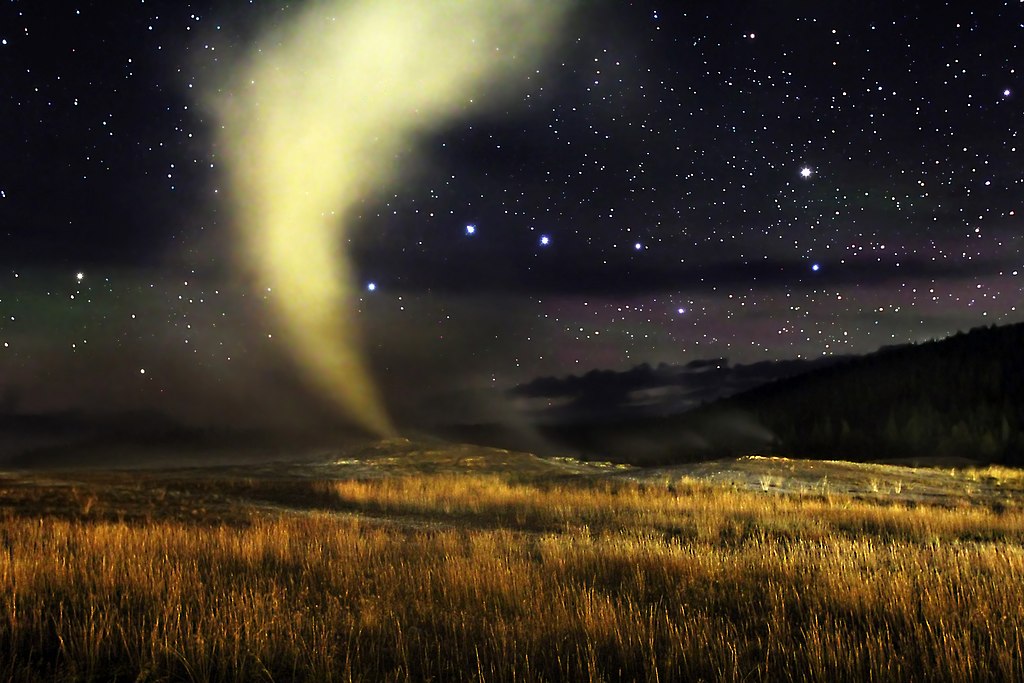
Yellowstone National Park’s remote location and high elevation create ideal stargazing conditions. The park’s expansive landscapes offer numerous spots for observing the night sky without interference. It’s a popular destination, but the vast wilderness allows for solitude and uninterrupted stargazing. Ranger-led programs and night sky events enhance the experience.
Acadia National Park, Maine
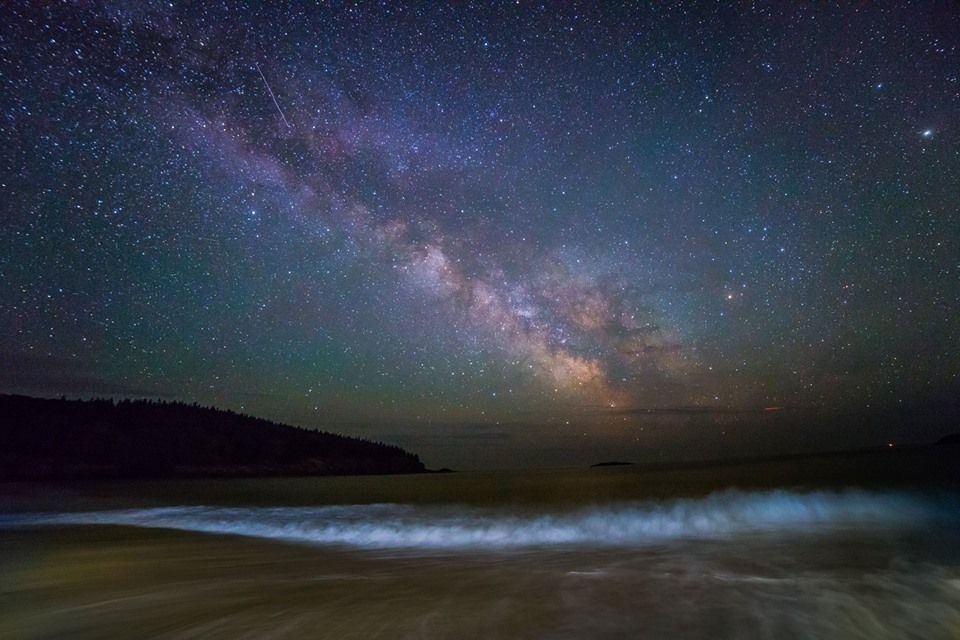
Acadia National Park offers some of the best stargazing on the East Coast due to its dark skies and coastal location. The park’s high points and clear air provide excellent views of the night sky. While it’s a popular park, there are many quiet areas to enjoy stargazing. The park hosts an annual Night Sky Festival and offers regular stargazing programs.
Arches National Park, Utah

Arches National Park is renowned for its dark skies and unique rock formations that create stunning nightscapes. The park’s remote location and clear air make it an ideal spot for stargazing. It’s a well-visited park, but finding a peaceful stargazing spot is easy due to its size. The park offers night sky programs and ranger-led events to enhance the experience.
Denali National Park, Alaska
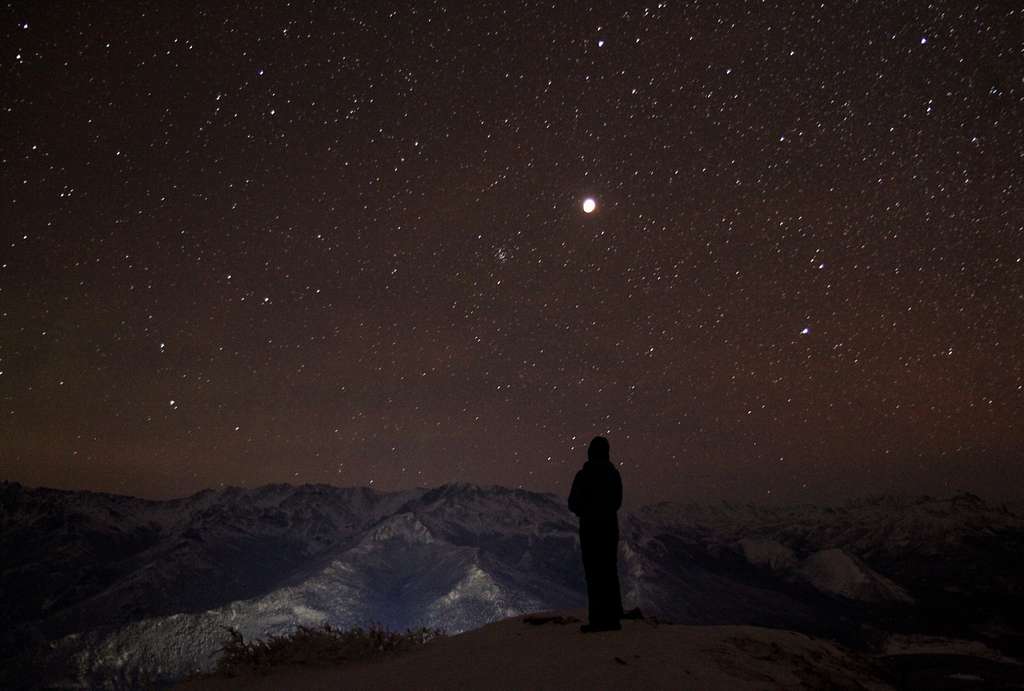
Denali National Park provides incredible stargazing opportunities, especially during the long winter nights. The park’s remote location and minimal light pollution ensure pristine views of the night sky. While it’s a popular destination, the vast wilderness allows for solitude and uninterrupted stargazing. The northern lights add a magical touch to the stargazing experience.
Badlands National Park, South Dakota
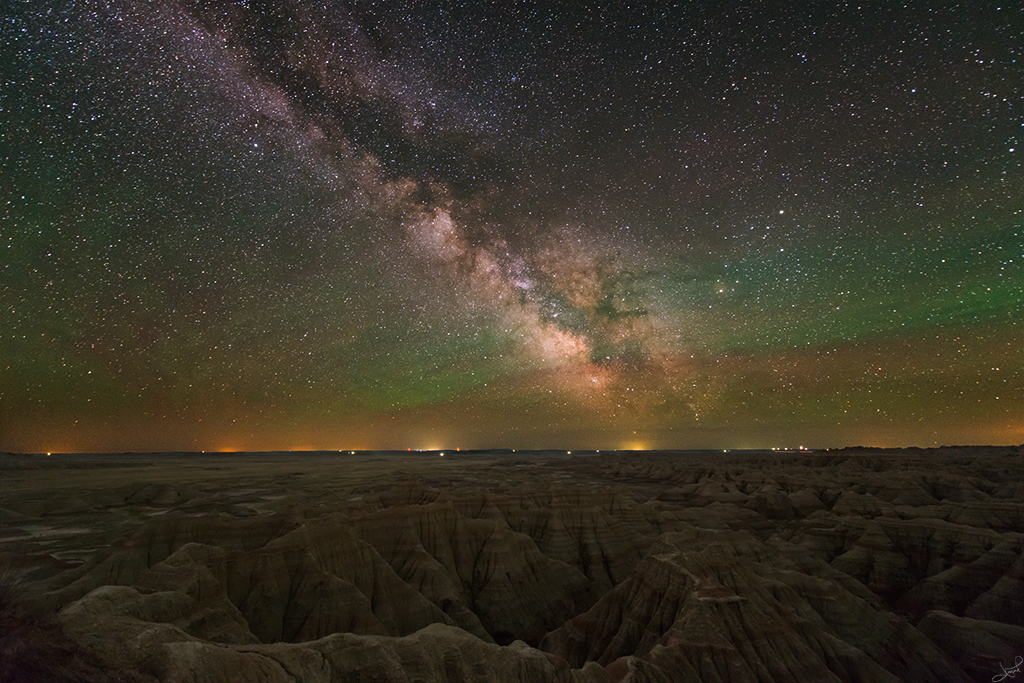
Badlands National Park offers some of the darkest skies in the Midwest, ideal for stargazing and astrophotography. The park’s remote location and clear air create perfect conditions for observing stars and planets. It’s a popular park, but the expansive landscape ensures plenty of quiet spots for stargazing. Ranger-led night sky programs enhance the visitor experience.
Grand Canyon National Park, Arizona
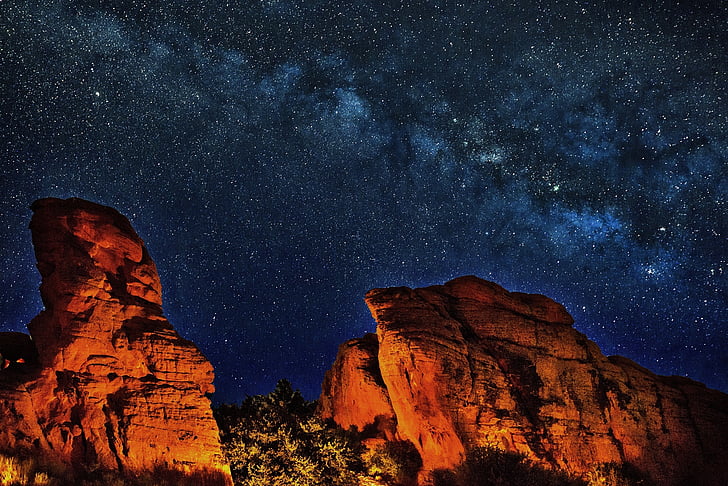
Grand Canyon National Park provides stunning views of the night sky thanks to its high elevation and clear, dry air. The park’s vastness and minimal light pollution make it an excellent stargazing location. It’s a popular destination, but there are many isolated areas for peaceful stargazing. The park hosts annual star parties and offers regular stargazing programs.
Zion National Park, Utah
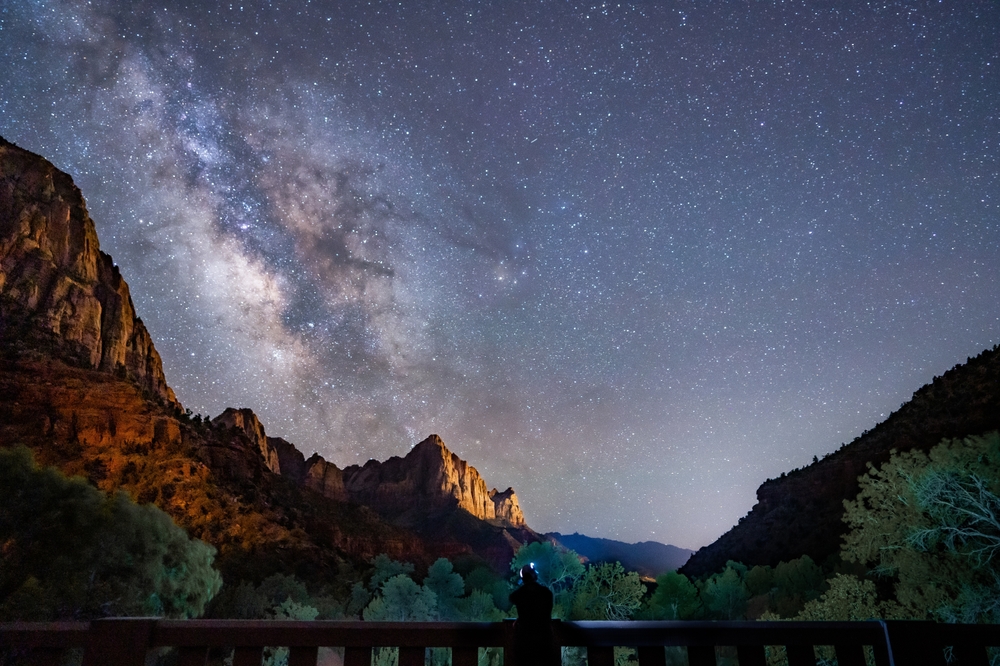
Zion National Park is known for its dark skies and dramatic landscapes, making it a great stargazing spot. The park’s remote location and clear air provide excellent conditions for observing the night sky. It’s a popular park, but finding a quiet stargazing spot is easy due to its size. The park offers night sky programs and ranger-led events to enhance the experience.
Mount Rainier National Park, Washington
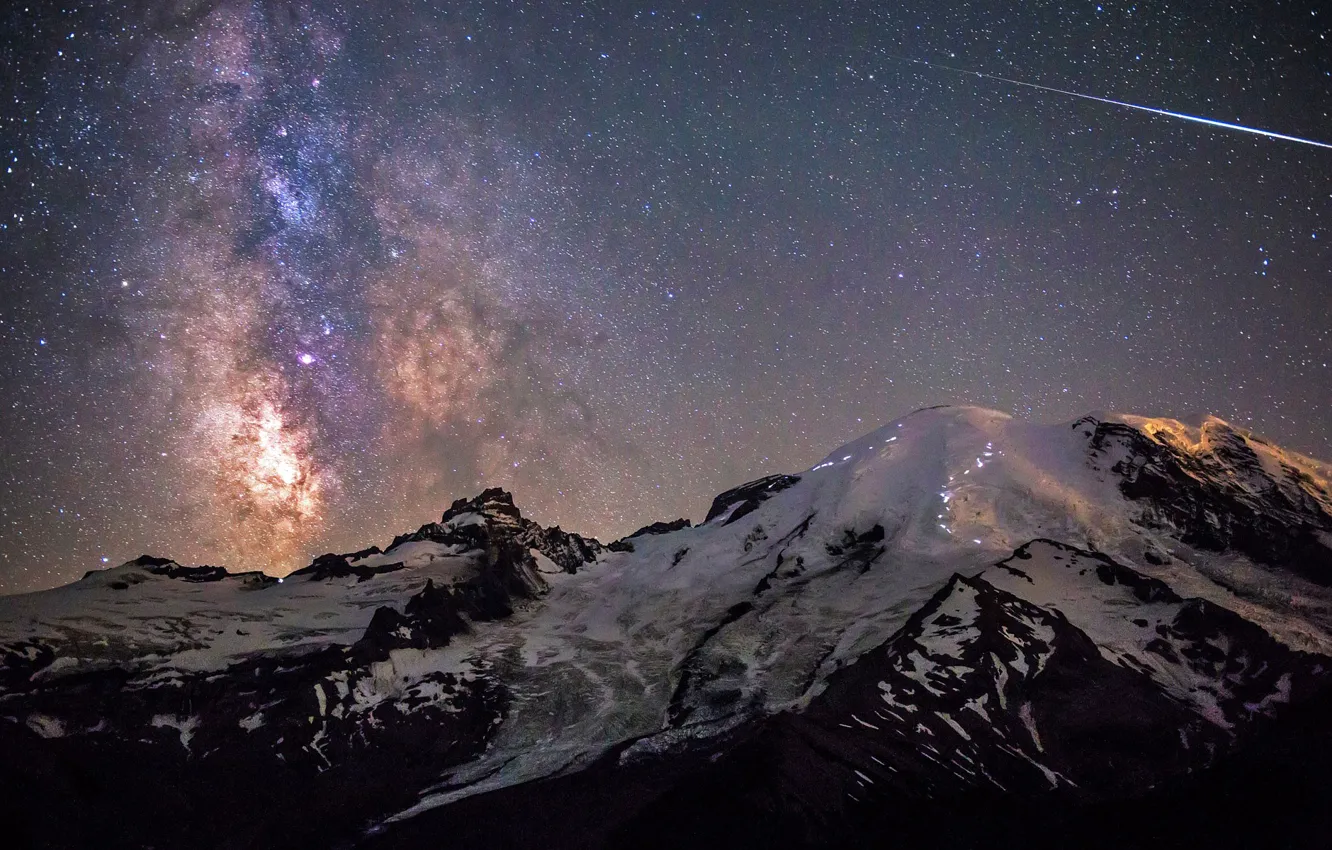
Mount Rainier National Park offers pristine stargazing opportunities thanks to its high elevation and minimal light pollution. The park’s remote location and clear air create perfect conditions for observing stars and constellations. While it’s a well-visited park, the vast wilderness ensures plenty of quiet spots for stargazing. Ranger-led night sky programs provide educational insights.
Canyonlands National Park, Utah
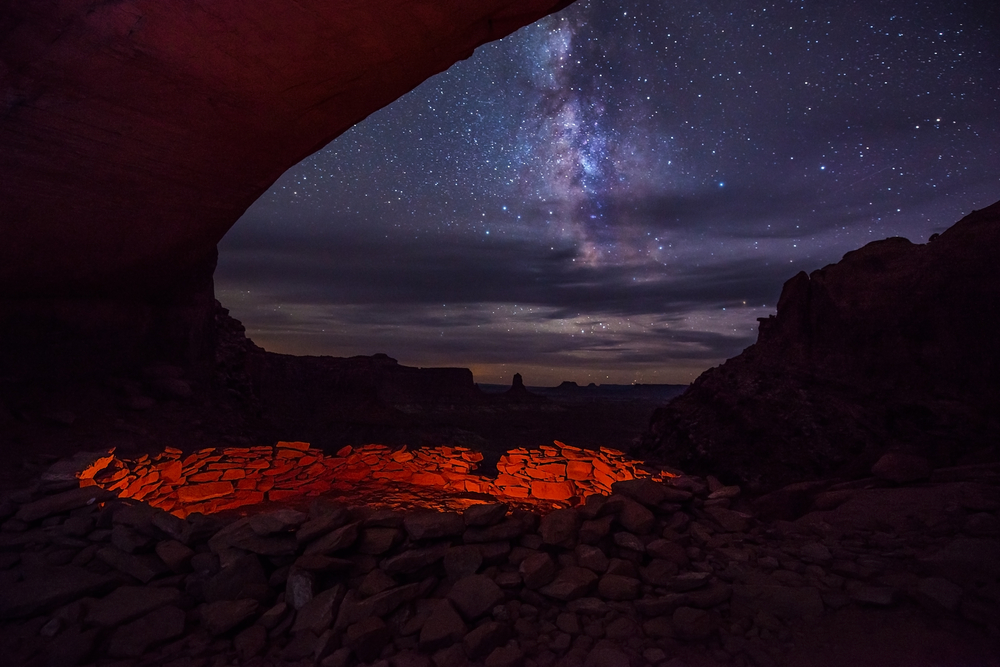
Canyonlands National Park is renowned for its dark skies and unique rock formations that create stunning nightscapes. The park’s remote location and clear air make it an ideal spot for stargazing. It’s a popular park, but finding a peaceful stargazing spot is easy due to its size. The park offers night sky programs and ranger-led events to enhance the experience.
Capitol Reef National Park, Utah
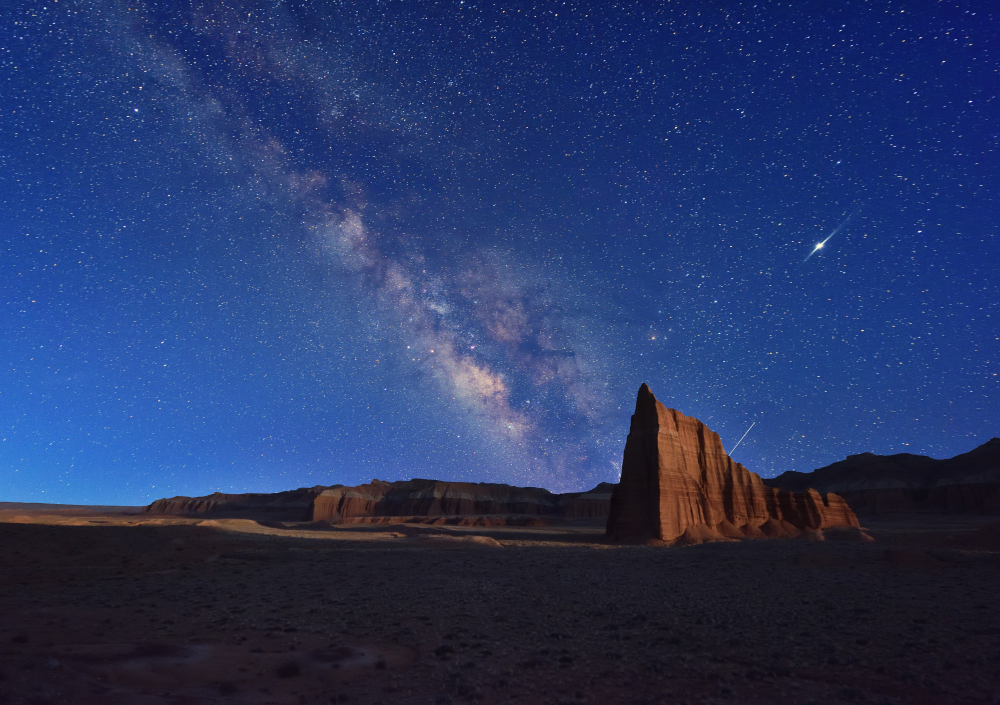
Capitol Reef National Park offers some of the darkest skies in the U.S., perfect for stargazing and astrophotography. The park’s remote location and clear air create ideal conditions for observing stars and planets. It’s a relatively quiet park, attracting dedicated stargazers and nature enthusiasts. Ranger-led night sky programs provide educational insights and enhance the experience.
This article originally appeared on UnifyCosmos.
More from UnifyCosmos
23 Hidden Literary Gems That Deserve More Love

Whether you’re looking for a gripping novel, a thought-provoking memoir, or a collection of captivating short stories, this list highlights the unsung heroes of the literary world that deserve much more recognition and appreciation. Read more!
24 Iconic Street Foods from Around the World

Get ready to tantalize your taste buds and discover the rich diversity of street food that captures the heart and soul of each destination. Read more!
24 Fitness Challenges to Boost Your Workout Motivation

Whether you’re a beginner or a seasoned athlete, these fitness challenges will help you stay committed, push your limits, and see real results. Read more!
Leave a Reply